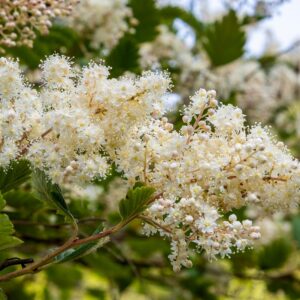Shrubs
Showing 1–12 of 17 results
 Out of stock
Out of stock
Showy Milkweed
Showy milkweed is an essential plant for various life stages of the monarch butterfly. Showy Milkweed is an essential plant for pollinators. Once established, it can grow in habitats ranging from dry to moist in road-sides, old fields, and meadows. Known for it’s fragrant flowers, this herbaceous perennial spreads through rhizomes in the soil. In the Summer, Showy Milkweed produces seed pods where they release their seeds which are dispersed by the winds. These plants will come to you as rhizomes and should be planted horizontally 4-6″ deep in the soil.
Read more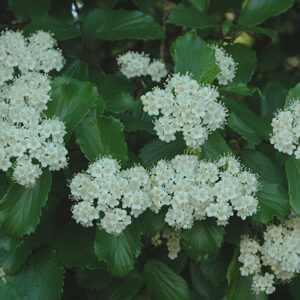 Out of stock
Out of stock
Oregon Viburnum
Viburnam ellipticum is native to southwest Washington to central California and found primarily on the west side of the cascades. It grows 3-9ft tall in a multistemmed bush. This plant provides white cluster flowers in May and June and beautiful fall colors.
Read more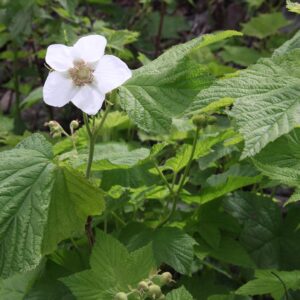 Out of stock
Out of stock
Thimbleberry
Thimbleberry is a staple of summer berries in July-September. It has wide fuzzy leaves and no thorns. It will grow 2-4 feet tall and is found in moist to dry open woods or along edges. It is rhizominous so will spread to form a stand.
Read more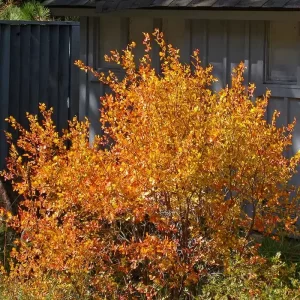 Out of stock
Out of stock
Three Leaf Sumac
Also known as Lemonade Sumac, this drought tolerant hearty shrub grow up to 8 ft tall and can handle a wide range of conditions. Yellowish flowers cluster in spikes which are followed by red fruit. This is another plant that shows striking fall foliage in the shades of yellow, orange and red.
Read more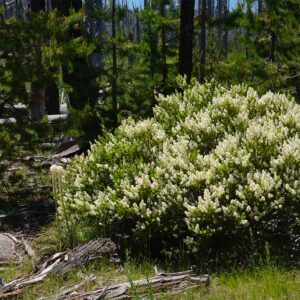 Out of stock
Out of stock
Red Stem Ceanothus
Also known as Redstem Wild Lilac, this shrub has white, showy clusters of flowers. They are vey fragrant and pollinated by bees. It is also commonly browsed by deer and elk. This plant is located on both sides of the Cascades and is often found in dry open sites where it improves the soil through nitrogen-fixation.
Read more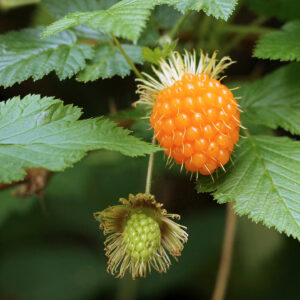 Out of stock
Out of stock
Salmonberry
This iconic PNW berry is found from SE alaska to northern California. It grows in wet woodlands and along stream banks and can handle sun to shade. It forms dense thickets that can grow 3-6 feet tall.
Read more Out of stock
Out of stock
Twinberry
Twinberry is part of the Honeysuckle Family. It can often be found in wetlands, alongside streams, and in open forests. This plant is a great “edge” species when planted between a forest and more open areas. It blooms with small yellow tubular flowers and is known for its showy pink bract surrounding shiny black fruit.
Read more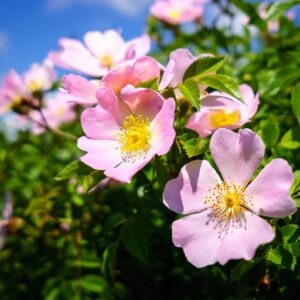 Out of stock
Out of stock
Woods Rose
This species will grow 2-9 feet tall and can handle both wet and dry soils and prefers full sun. It has showy pink flowers in the spring and bright red rose hips in the fall giving nice color for winter. This plant can be aggressive making it a great species for restoration sites, hedge rows, fence lines, or places that are hard for other plants to establish.
Read more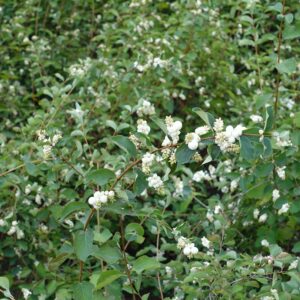 Out of stock
Out of stock
Snowberry
This unsung hero of the plant world is versatile, elegant, and tough as nails—if you cant get something grow in a specific location, plant snowberry. This deciduous shrub is 2-6 feet tall and very adaptable to a wide range of growing conditions. It produces small pink and white flowers in the spring and clusters of showy white berries that persist through the winter. *Careful: the berries are poisonous if eaten by humans but are great for wildlife.
Read more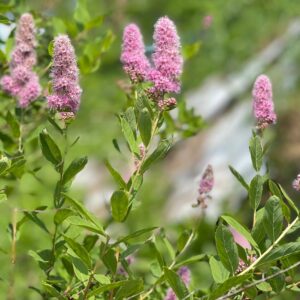 Out of stock
Out of stock
Douglas Spirea
Douglas spirea is rhizomatous and multi-branched shrub that grows 5-8 feet tall. It prefers moist to wet soils and full sun. It produces bright clusters of tiny pink flowers. This plant is excellent for wetlands and riparian areas but can tolerate drier soils in a landscape setting.
Read more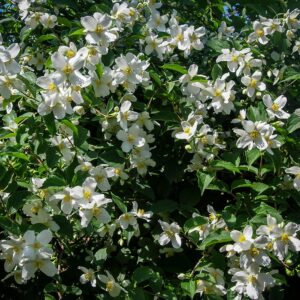 Out of stock
Out of stock
Mock Orange
You want this plant. Mock orange is a loosely branched deciduous shrub, which grows 5- to 10-feet tall. It has showy, fragrant, white flowers that appear in May. It will grow in moist-dry, well-drained soils and prefers full sun to partial shade. In the bare root form it will come as a faily delicate plant but grows quick, it may just take a bit of extra care to get it established.
Read more
